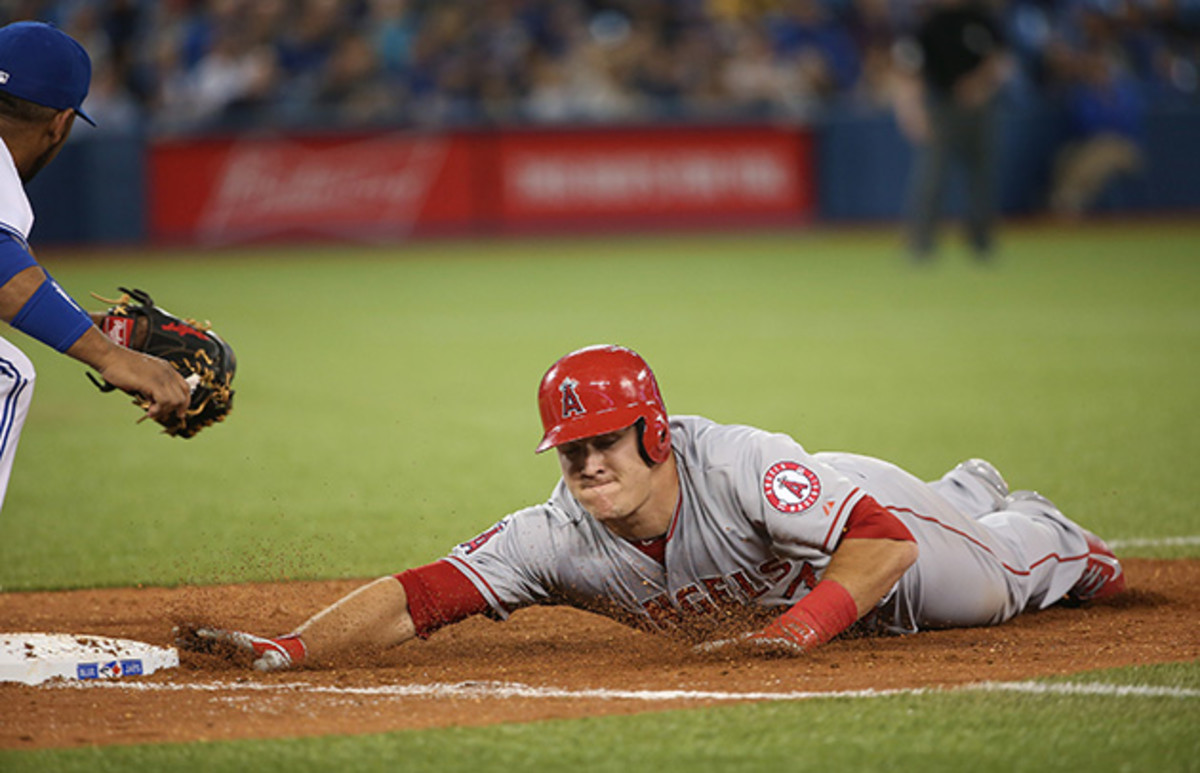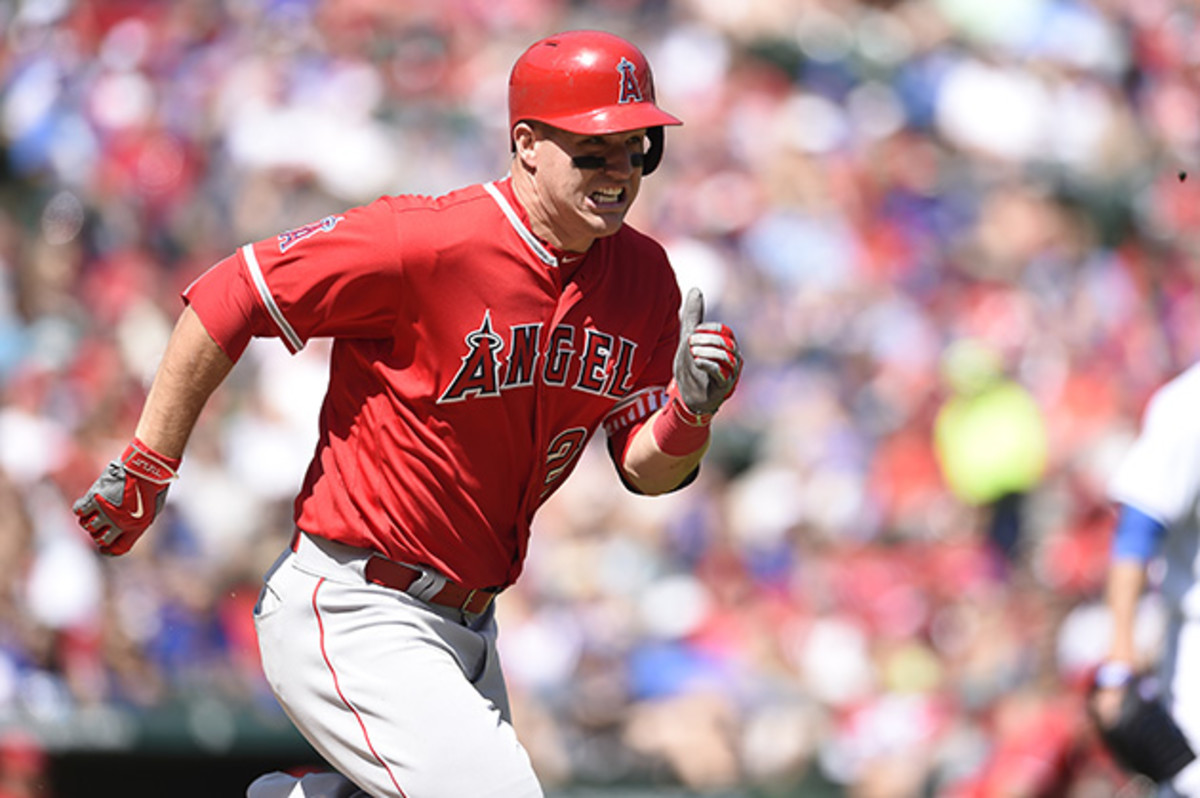Training with Mike Trout: Angels' centerfielder feels the need for speed

Mike Trout makes playing baseball look easy. The Millville Meteor, as Trout has been dubbed, plays the game as hard as his moniker implies, and is always looking to improve his game. That gets more difficult for Trout every season; the Angels' centerfielder, 24, has finished each of his four full years in the majors as runner-up for the American League MVP Award—except for 2014, when he won it. That performance starts with his off-season workouts with Millville, N.J.-based trainer Dan Richter.
According to Richter, Trout’s body is a well-oiled machine that doesn’t need to be built any further, only maintained. Throughout his career, Trout has been remarkably consistent. He’s gone from a .320-plus hitter with 30 home runs in his first two full seasons to a high .200s hitter with more power in his last two.

"When he first made the majors, I remember him having the most work to do in the off-season. We worked a lot on strength because he was, in my eyes, a little bit too bulky," Richter says. "The last couple years, we've pushed the power and strength to the point that I think he's just where he wants to be."
This is not merely an estimate. The 6'2" Trout says his ideal playing weight is between 238 and 240 pounds; this spring training Trout weighed in at 239.
The SI Extra Newsletter Get the best of Sports Illustrated delivered right to your inbox
Subscribe
The biggest challenge for Richter is keeping the easily bored Trout interested. Therefore Trout's 90-minute workouts six days a week make up a regimen, but not a routine.
“We don’t really focus on one thing,” Richter says. “Mike doesn’t have any glaring weaknesses, so what I do is help him build in a way that won’t necessarily change his measurements, but will help preserve his body in August and September.
"I keep it fresh. It's different workouts every day. We do everything from power and endurance to speed and agility to plyometrics to power moves, because that's the way to keep him best engaged."
Out of the box: Mike Trout's explosive training secret
“We do so many different things during the offseason, it never gets stale,” Trout says.
Richter will mix and match exercises to keep Trout on his toes.
“I’ll throw him on a treadmill and have him do some backwards jogs, forward sprints, shuffles at various speeds, usually decreasing until I have him manually move the treadmill without assistance,” Richter says. “But we’ll have the ladder he’s about to do set up and get a few sets of kettle bell swings in there, and then there will be more speed and agility before we get into plyometrics. And that’s pretty much every day. We mix and match.”
Trout doesn’t pay attention to numbers—he doesn’t know his one rep max or fastest sprint time. He also doesn’t remember the names of the different exercises Richter had him do this past offseason. He leaves those details to his trainer, whom he trusts completely with his conditioning.
“Dan knows what comfortable for me body, what will push me the right way,” Trout says. “It’s just about maximum effort every time, whether it’s a bunch of weight five times or lighter reps 20.”
The other key to Richter's approach is competition.
“Mike hates to lose. At anything,” Richter says. “It doesn’t matter if it’s treadmill racing. He’ll be looking to win, and working hard to do so. That’s the level at which he trains best.”
Tech Bit: Zepp builds advanced smart bat for MLB superstar Mike Trout
Richter has Trout bring his friends along and makes them face off in various exercises. He also tracks Trout's weights and times and uses them to challenge Trout to do better. But Richter's most effective technique is challenging the weaker points in Trout's previous season. This off-season, Richter's motivational jabs were about Trout's speed.
“We would spend 45 minutes or so on speed and agility drills two to three days a week, which really isn’t much more or less than the time we spend on everything else, but during those times I would ask him, ‘What happened to your speed?’” says Richter.

To Richter’s point, Trout stole 49 bags in his first full season in 2012. He stole 33 in 2013, 16 in 2014, and just 11 last season. Trout says that half the battle is finding the aggression he had on the base paths in 2012, but he was caught stealing seven times while collecting those 11 steals in 2015. Trout was caught seven times in 2013, while stealing triple the bags.
As soon as arrived at spring training this year, Trout also started working with third base coach Ron Roenicke to improve his leads and jumps.
“The way I feel coming into this season, I feel like as long as I find that aggression that I had in my rookie year, my numbers will go up.” Trout said.
After a slow start, Trout has taken off and is now batting .303 with seven homers, though he still has just two steals through 33 games. But the swipes will come, because Trout is once again in the best shape of his life.
Trout's exercises for increasing speed

Below are some of the exercises Trout used during his 45-minute speed and agility sessions with Richter during the offseason.
Plate Push
Place a weight faceup on the turf and get in a runner's position with both hands on the plate. Push the plate 25-30 yards as fast as possible, then go back. Do 10 circuits, and start with a 25- or 35-pound plate and work up to 45.
Treadmill Interval
Walk for two minutes, then jog for another two. After that, increase the speed until you're sprinting and sustain for 30 seconds to one minute. After the sprint, do a series of squat jumps before repeating the treadmill sequence. As you improve, increase walk, jog and sprint duration and add incline to the treadmill.
